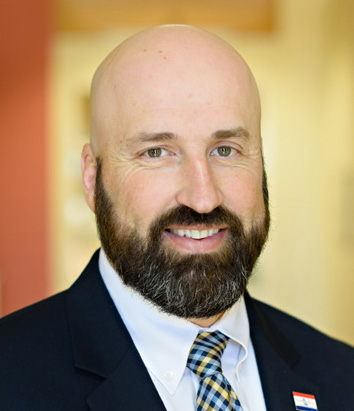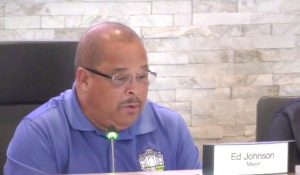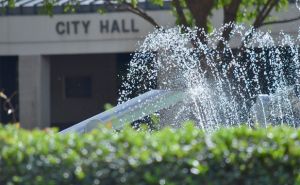1st of 3 public hearings Aug. 2; most of increase to go to public safety —
The Fayetteville City Council in three upcoming public hearings will consider a 5.646 millage rate for 2018, representing an increase of 1.75 mills over the rollback rate of 3.896 mills, equating to a 44.92 percent increase in property taxes. The first meeting will be held at City Hall on Aug. 2 at 6 p.m.
Of the $1.811 million in additional revenues, $1.46 million will go for new police and firefighters. The Capital Projects Fund portion of the budget will designate $499,000 for public safety vehicles and equipment.
The city’s current rate is 3.874 mills. A breakdown of the proposed 5.646-mill rate shows a General Fund rate of 4.601 mills and a Capital Project Fund rate of 1.045 mills mainly for public safety needs. City staff noted that one mill equals $952,584 of total digest taxes of $5,378,290. The increase translates to a $177.20 increase in property taxes for a home valued at $250,000.
At 5.646 mills, the 2018 rate will generate $1,811,172 in additional property tax revenues. Of that, 4.601 mills will be used for General Fund expenses while 1.045 mills will fund capital projects which are mostly public safety needs.
City staff said reasons for the $1.811 million in additional property tax revenues includes paying for 12 new firefighters, five new police officers, capital items such as police and fire vehicles, vehicle and body cameras and turnout gear, a one-time increase to stabilize the millage rate for the next 6-10 years, seed money for the new City Hall/City Park project (to be refunded), a pay and classification study, future cost of living increases during the stabilization program and future funding of parks and recreation from 2020 forward.
Pertaining to the increase relating to a dozen firefighters being brought on by the SAFER grant, City Manager Ray Gibson said, “The 12 firefighters were to bring our first alarm response to meet NFPA (National Fire Protection Association) 1710 staffing requirements to ensure adequate personnel are available to complete all the critical tasks required at a building fire. It also helps increase our apparatus staffing to better meet two-in/two-out (two firefighters inside a structure fire together with two outside for a potential rescue) requirements with the first arriving apparatus. Interior firefighting operations cannot commence until two-in/two-out is established. These two factors were the basis for the award of our SAFER grant.”
The SAFER grant helps offset the cost for new firefighters only for a three-year time frame.
The increase of five police officers and the vehicle and equipment costs associated with them helps the takeover of law enforcement duties associated with the west Fayetteville area which has been accomplished by the sheriff’s office. The city was to have taken over those duties in 2016.
It was in 2013 that 1,200 acres were annexed into the city on Fayetteville’s west side. Developed to date are Pinewood Atlanta Studios, Ga. Military College, the beginning of the large Pinewood Forest mixed-use community and another large mixed-use development now being proposed near South Sandy Creek Road and Ga. Highway 54 West. Each of the developments are a short distance from the upcoming new fire station to be constructed on Veterans Parkway.
Pertaining to the seed money for the new City Park and City Hall, Gibson said, “We have the ability to repay our General Fund back once we issue bonds for City Hall. The removal of buildings on the school system property and the land disturbance work that needs to be done for city hall can be reimbursed once we issue the bonds. Some of the extra money for FY 2019 will be used for this purpose.
Another small portion of the funds generated by the millage increase, the future funding for parks and recreation, deals with the city’s responsibility to maintain the new park and a number of anticipated amenities.
The City Council last month adopted the 2019 budget totaling $15.48 million. A five-year budget forecast shows General Fund expenses in 2020 totaling $16 million, followed by $16.26 million in 2021, $16.822 million in 2022 and $17.08 million in 2023.
As for the stabilization program, it is in reference to the 10-year fiscal sustainability plan that is driving the millage increase. There are some COLA (cost of living) increases that will occur within the 10-year plan that help create the total cost in any given year, Gibson said.
The three public hearings on the millage rate will be held at City Hall located at 240 South Glynn Street on Aug. 2 at 6 p.m., Aug. 9 at 7 p.m. and on Aug. 16 at 5:45 p.m., with adoption following at 6 p.m.













Leave a Comment
You must be logged in to post a comment.